The bun thang restaurant on To Hien Thanh Street (Hai Ba Trung, Hanoi) of Nguyen Thi Gai and her husband has been open for more than 10 years. Although it is not a long-standing bun thang restaurant in Hanoi, it still has a large number of customers. Ms. Gai can sell 600 - 800 bowls of bun thang and chicken pho from 5:30 am to 1:30 pm every day.
"I only sell for half a day because I'm too tired! During the 8 hours of opening, customers come and go continuously, my husband and I and 11 employees work tirelessly. I want to stay healthy to make delicious food for the next day's sale," said Ms. Gai while quickly picking ingredients and placing them in a bowl of bun thang.
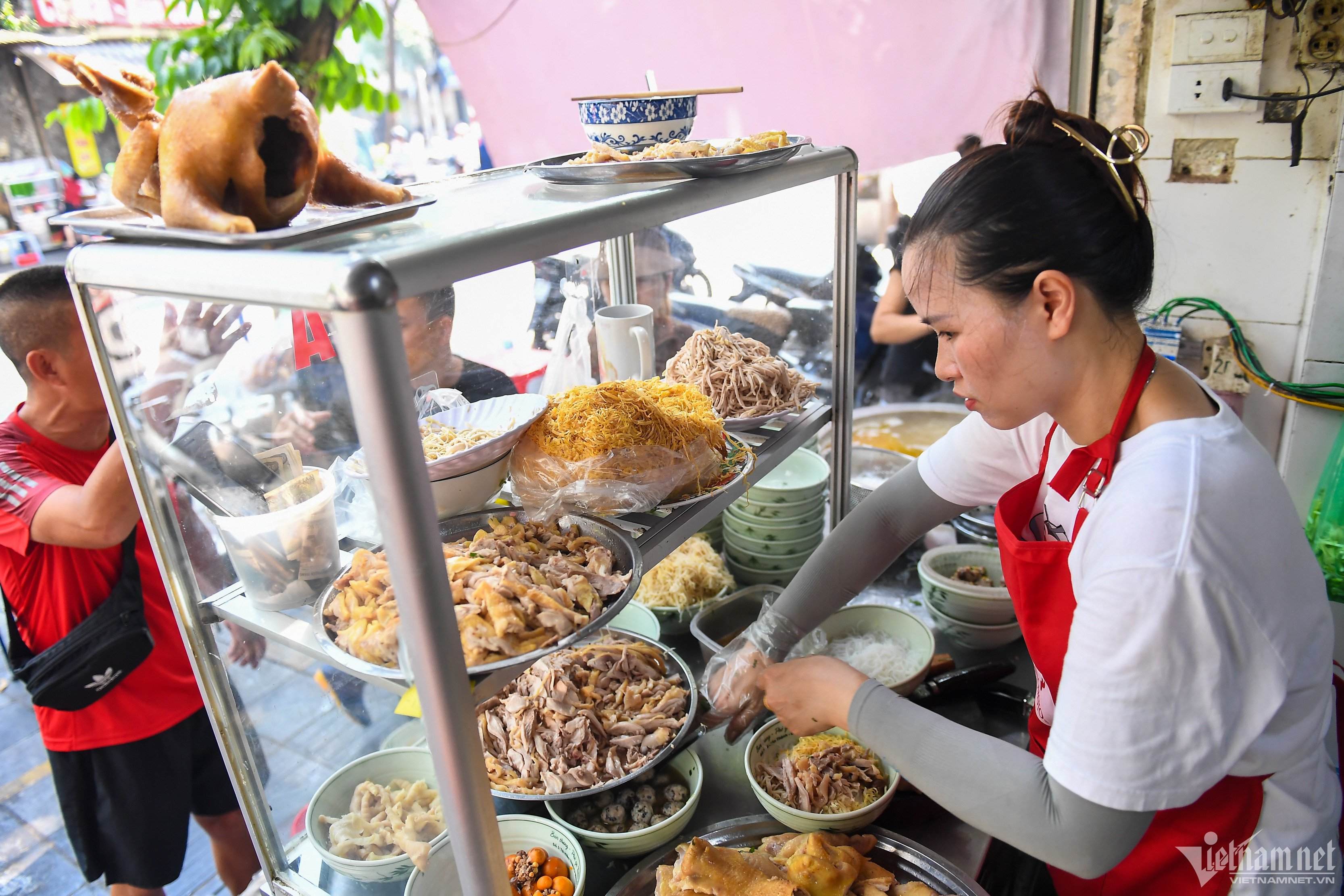
Ms. Gai confided that she was originally from Thanh Hoa, and later moved to Hanoi to work and get married. Before getting married, Ms. Gai worked as a kitchen assistant for more than 10 years. She loves cooking and has always dreamed of having her own small restaurant.
"The shop premises is my husband's family's house. Previously, the house was rented to an old lady who sold bun thang. Later, when she got old, she stopped selling. At that time, the children were grown up, so I discussed with my husband about opening my own bun thang and chicken pho shop. I researched, learned the recipe and practiced at home, tried cooking many times to invite relatives," Ms. Gai recalled.
"When we opened the restaurant, my husband and I were still very confused. When customers came to eat, when they were about to leave, I would come over and ask them how they felt, and if they needed to adjust the flavor. Every day when customers finished their bowl of noodles and nodded in approval, I was happy all day," she shared.
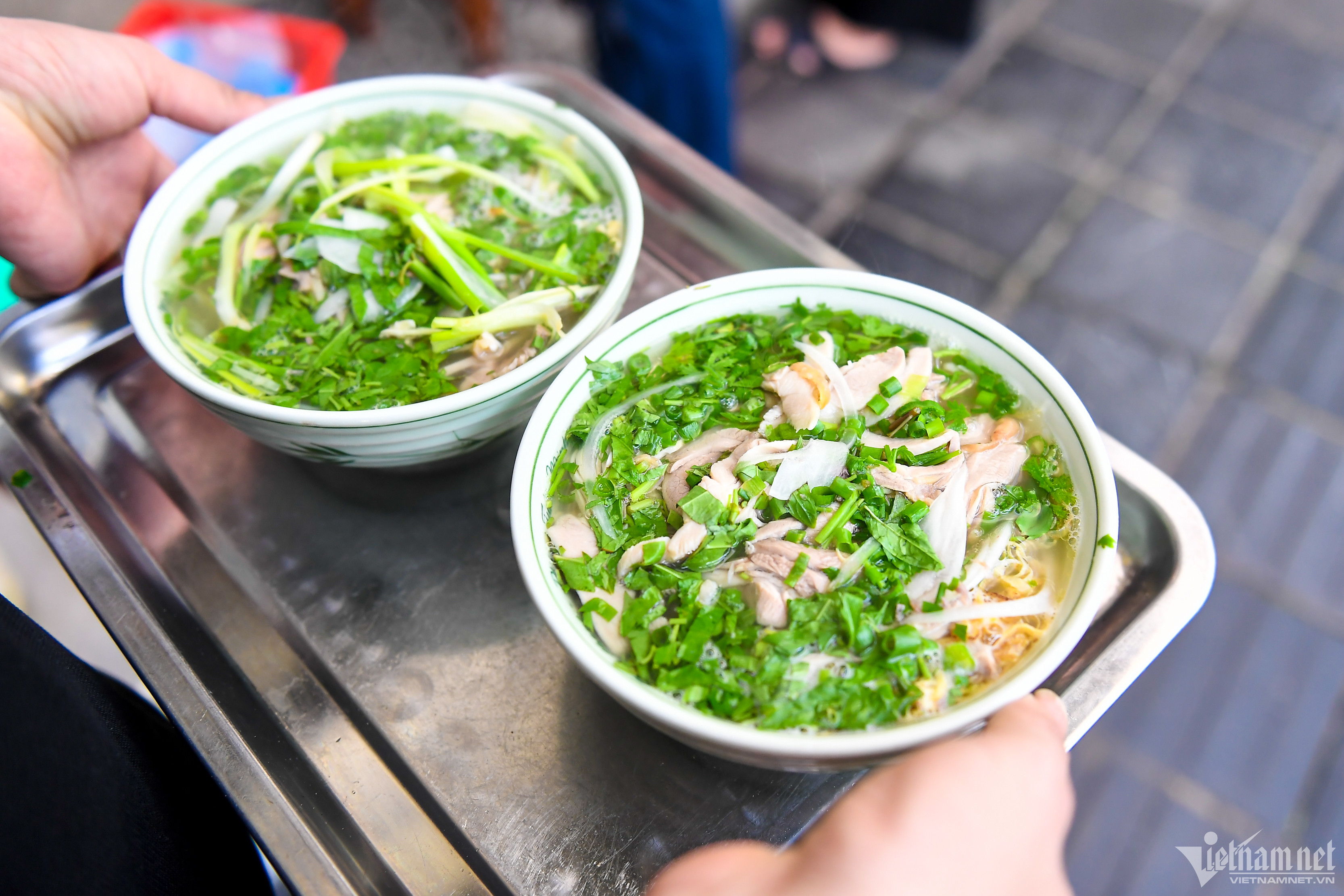
The steps of making Bun thang require meticulousness and sophistication. For the broth, Ms. Gai simmers pork bones for about a night. Before simmering, the bones are washed, blanched, and the foam is regularly skimmed. When the bones are tender, she removes the bones and uses the stock to make the broth for Bun thang. According to Ms. Gai, the broth for Bun thang must have dried shrimp and shiitake mushrooms to make the broth sweet and fragrant. She also adds sea worms, onions, and ginger to make the broth rich.
"I cook the same way I cook for my customers, so that they can eat delicious, clean food and feel like they're home-cooked. I don't hesitate to invite anyone who wants to see the kitchen to see how carefully my husband and I work," Ms. Gai said with a smile.
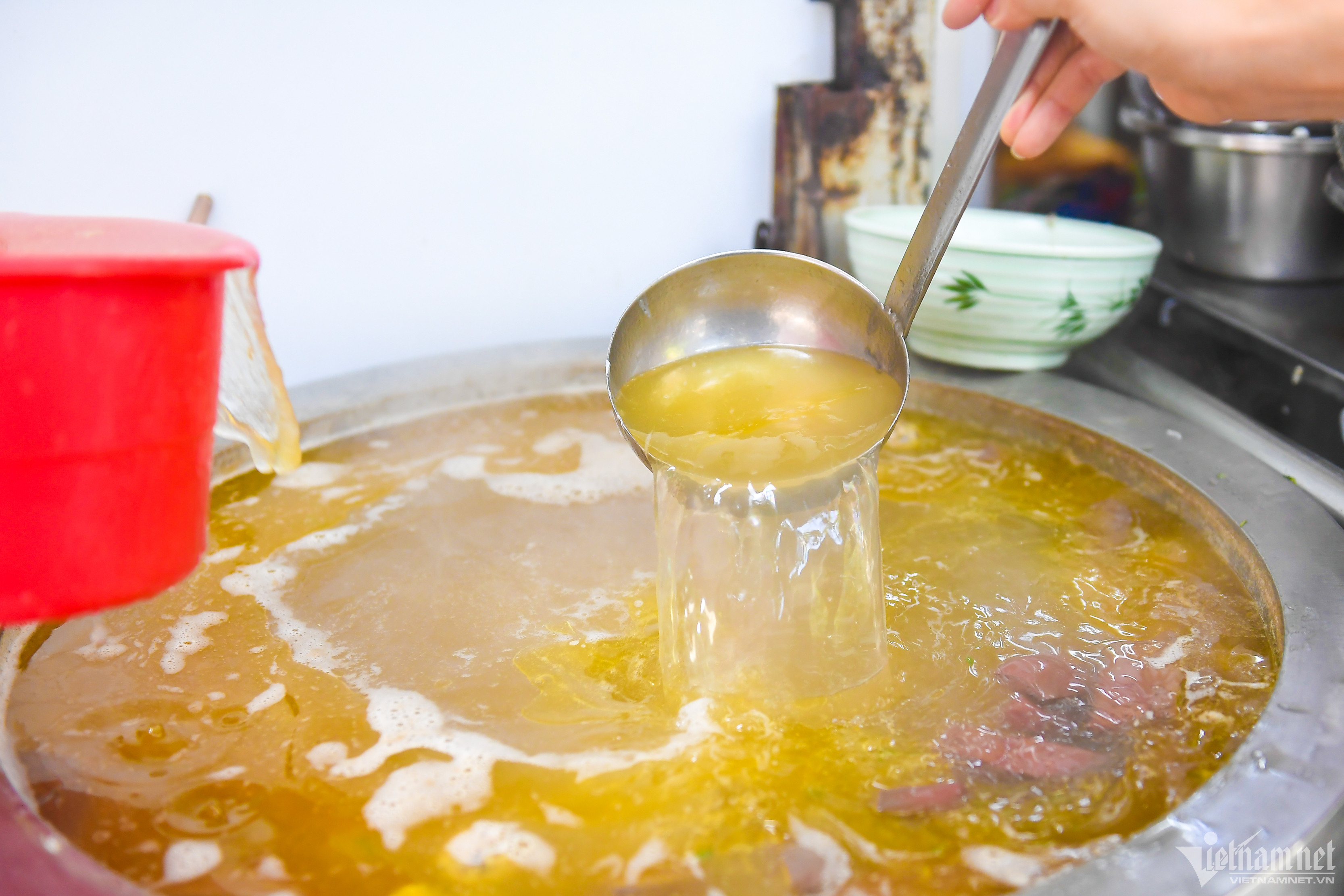
Each typical bowl of bun thang at the restaurant includes dried radish, ham, fried egg, shiitake mushrooms, and chicken. At 4am every morning, Ms. Gai starts receiving the chicken, washing it with salt water, and blanching it to remove the smell. She boils each batch of chicken for 25 minutes, then soaks it in the pot for another 5 minutes so that the chicken is cooked evenly from the inside out but the skin is still crispy. The restaurant sells 25-30 chickens a day.
"Screening chicken is very time-consuming. I learned many times to master it before opening the restaurant. Here, I don't boil all the chicken but divide it into different batches. At 4am, I start boiling a batch to sell in time at 5:30am, then at 8am I boil the second batch, and at 11am I boil the third batch. Although it takes time, the chicken is always fresh and delicious, not dry," said Ms. Gai.

The meatballs are also made by Sister Gai and her staff every day. The pork is not ground too finely, the shiitake mushrooms and wood ear mushrooms are chopped by hand, so that when they are finished and put into the broth, the meatballs will retain their crispness. Before using, the dried radish must be soaked for 2 hours, washed thoroughly with water, drained, and then marinated with vinegar and sugar. The eggs are ground very finely, spread thinly, and cut into thin strips. The vermicelli must be small, blanched in boiling water and then placed in a bowl. Before pouring the broth, Sister Gai adds a little bit of delicious shrimp paste to make the bowl of vermicelli more fragrant.
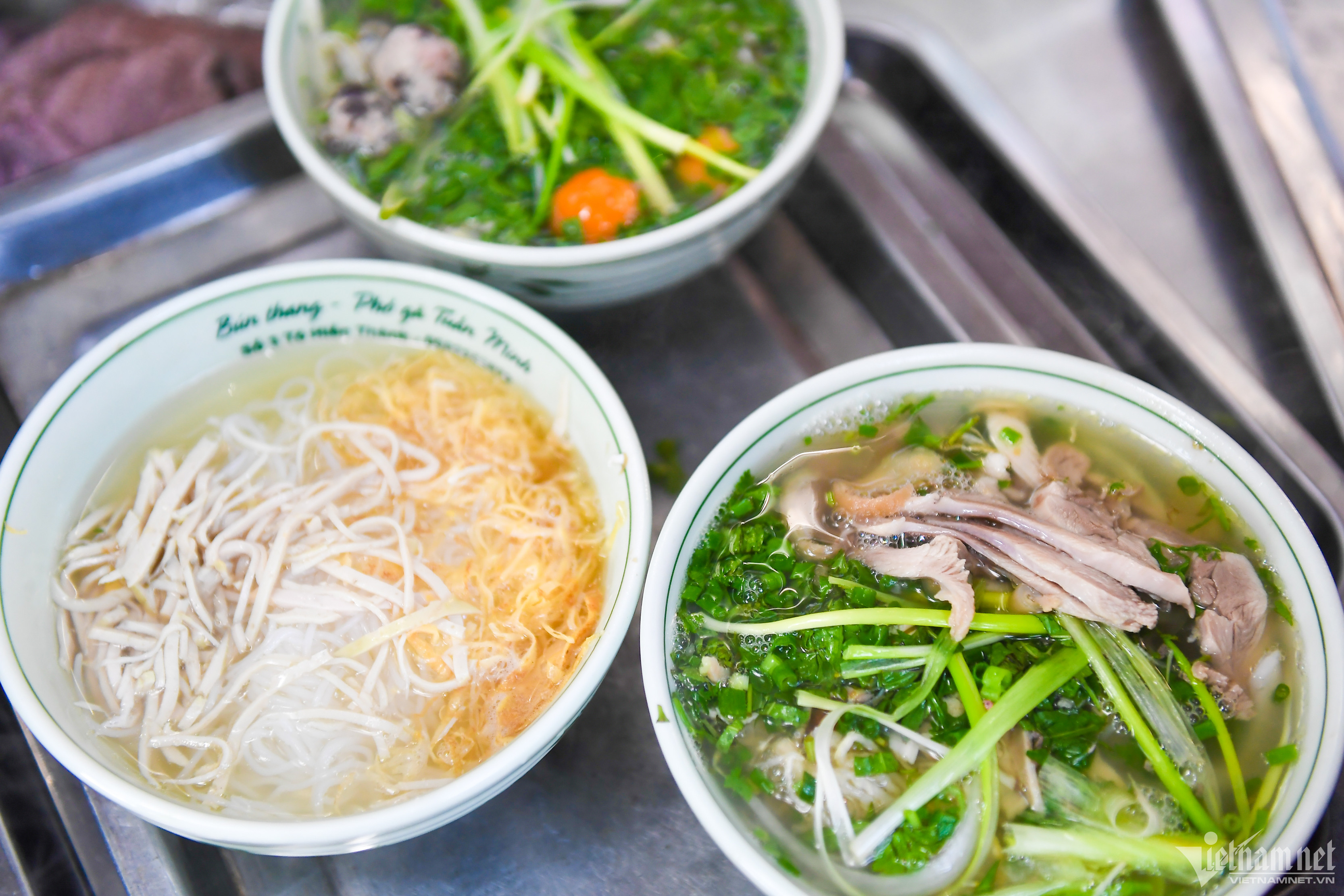
Each bowl of noodles with dried radish, ham, fried egg, shiitake mushroom, and chicken costs 40,000 VND. "This price is not expensive compared to other restaurants in the old quarter or nearby. My family does not have to pay for the premises, so my husband and I decided to make a profit from the work, the most important thing is that the customers love us and come back many times," said Ms. Gai.
The restaurant also has bowls of bun thang priced at 80,000 - 100,000 VND. These bowls have deboned chicken, young eggs, chicken gizzards... All mixed in a rich, clear, sweet broth, imbued with the scent of dried shrimp, chicken, and shiitake mushrooms.
Many customers have been with the restaurant for nearly 10 years. Mr. Do Duong Quang (To Hien Thanh) is both a neighbor and a regular customer of the restaurant. "The bowl of noodles does not have any strange or hard-to-find ingredients, but they are combined harmoniously and well. I especially like the clear, sweet, rich broth. The prices here are also very reasonable," said Mr. Quang.

In terms of advantages, the restaurant of Ms. Gai and her husband has a spacious area and airy seating. From the owner to the staff, everyone is very welcoming and friendly. When customers drive up, someone will immediately help them find a parking space or push their vehicles onto the sidewalk. The price of bun thang at the restaurant is affordable - from 40,000 VND/bowl but still full, with a balanced flavor and fresh ingredients.
For some customers, the taste of the bun thang here is not 100% authentic to the original Hanoi bun thang, but the owner's perfection and meticulousness still satisfy them.
Source







![[Photo] National Assembly Chairman Tran Thanh Man attends the Party Congress of the Committee for Culture and Social Affairs](https://vphoto.vietnam.vn/thumb/1200x675/vietnam/resource/IMAGE/2025/5/11/f5ed02beb9404bca998a08b34ef255a6)




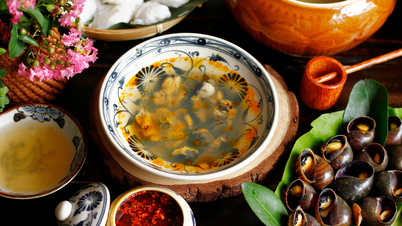





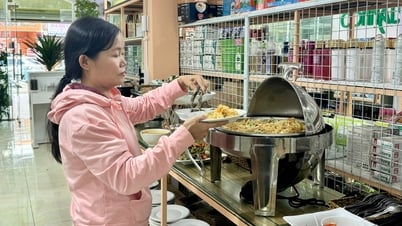



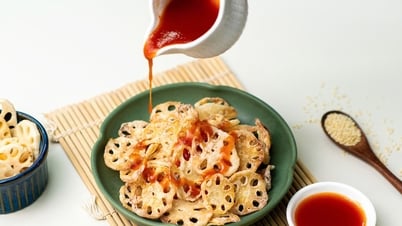
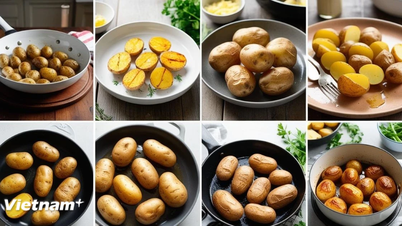





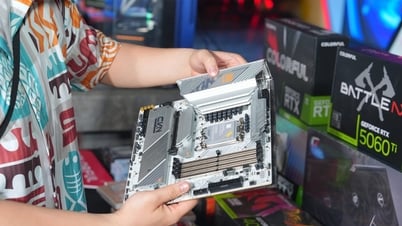




![[Photo] National Assembly Chairman works with leaders of Can Tho city, Hau Giang and Soc Trang provinces](https://vphoto.vietnam.vn/thumb/1200x675/vietnam/resource/IMAGE/2025/5/11/c40b0aead4bd43c8ba1f48d2de40720e)
![[Photo] Discover the beautiful scenery of Wulingyuan in Zhangjiajie, China](https://vphoto.vietnam.vn/thumb/1200x675/vietnam/resource/IMAGE/2025/5/11/1207318fb0b0467fb0f5ea4869da5517)































































Comment (0)